What is DataStore.edb and Why Does it Slows Down My PC?
DataStore.edb is a legitimate Windows log file that keeps track of all Windows Updates applied to the system. DataStore.edb log will grow in size or every Windows Update check. The file is located under the SoftwareDistribution folder (C:\Windows\SoftwareDistribution\DataStore\DataStore.edb)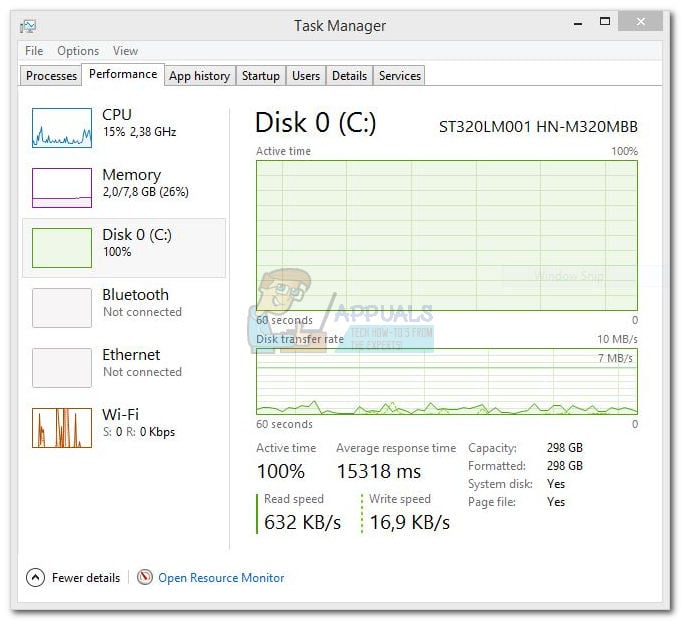 While the importance of the file is undisputed, some users have found that their systems spend a lot of time reading and writing to DataStore.edb, hogging a lot of resources to the point where the PC is slowed considerably. Upon investigating with the Performance Monitor, users facing this issue reported that the process svchost.exe (netsvcs) is using all disk resources to read the datastore.edb at over 120MB / min – this leaves the computer unable to do anything else. From what we gathered, this is primarily a Windows 7 and Windows Vista issue.
While the importance of the file is undisputed, some users have found that their systems spend a lot of time reading and writing to DataStore.edb, hogging a lot of resources to the point where the PC is slowed considerably. Upon investigating with the Performance Monitor, users facing this issue reported that the process svchost.exe (netsvcs) is using all disk resources to read the datastore.edb at over 120MB / min – this leaves the computer unable to do anything else. From what we gathered, this is primarily a Windows 7 and Windows Vista issue.
As it turns out, the datastore.edb file is read by the Windows updating component whenever a new update is pending. Depending on the circumstances and the specs of your PC, it might make your machine inoperable while the datastore.edb file is being interrogated.
If you’re struggling with this particular issue, there are a few fixes that users have found to be successful in resolving this crippling behavior. Below you have a collection of solutions that have enabled users to fix the issue. Please follow each method in order until you find a fix that works in your situation.
Note: If you’re on Vista, start directly with Method 2.
Method 1: Install Windows Update KB3050265 (Windows 7 only)
Microsoft was quick to resolve the issue and released a WindowsUpdate Client Update to fix this issue. The update was supposed to fix the inefficiency of WU (Windows Update) when searching and installing updates, thus reducing prolonged reading times of the datastore.edb file.
Although users found that the update was beneficial in reducing the detection time and the usage of RAM and disk, the fix didn’t manage to solve the problem for everyone. For one thing, the fix will only work with Windows 7 – no official fix was ever released for Vista. Even more, some users reported that this particular update entirely broke the WU component with the errors WindowsUpdate_80244019 or WindowsUpdate_dt000.
Keep in mind that the update is optional and won’t be applied unless you install it yourself. If you’re encountering this issue on Windows 7, follow the guide below to install Windows Update KB3050265. If it ends up not working, remove the update and move to the other methods below:
- Visit one of the links below according to your Windows version and download the correct KB3050265 update:
Windows Update KB3050265 (32Bit)
Windows Update KB3050265 (64Bit) - Once the update is downloaded, open the installation package and reboot the system once it installs successfully.
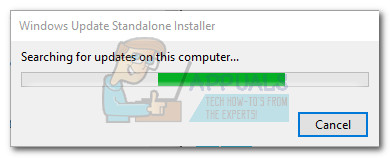 Note: You can also install it straight from your PC by going to Control Panel > System and Security > Windows Update > Show all available updates > Optional. Then, manually look for the KB3050265 update and install it.
Note: You can also install it straight from your PC by going to Control Panel > System and Security > Windows Update > Show all available updates > Optional. Then, manually look for the KB3050265 update and install it.
If you find that this doesn’t fix your issue, open a Run window (Windows key + R) and type control update. Then, go to View installed update history > Uninstall updates and uninstall the KB3050265 update. Once uninstalled, move to Method 2.
Method 2: Using esentutl.exe to defragment datastore.edb
Before we explore more in-depth solutions, let’s see if defragmenting the datastore.edb file will resolve the issue. Apparently, this is only a temporary fix as the issue will re-appear in time as the datastore.edb files accumulate enough new information.
This method involves using the esentutl.exe utility to defragment the DataStore.edb file. On top of making the file more accessible for the programs that need to write or read from it, this process will also reduce it’s size considerably. Here’s a quick guide through the whole thing:
- We’ll need to open an elevated Command Prompt window in order to have the appropriate permissions. To do this, click the Start bar in the bottom left corner and search for “cmd“. Then, right-click on Command Prompt and select Run as administrator.
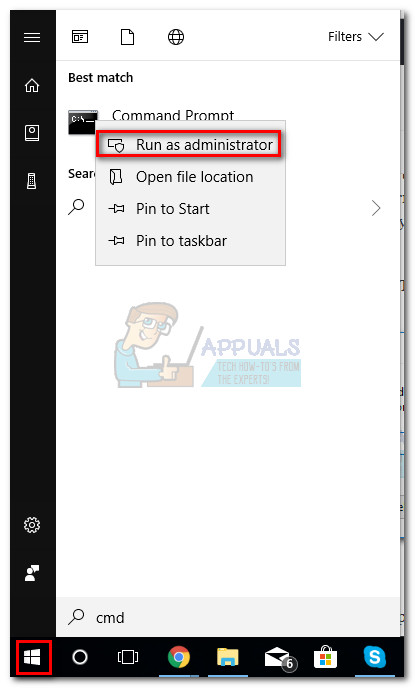
- Type the following command into the elevated Command Prompt window and hit Enter:esentutl.exe /d C:\windows\SoftwareDistribution\DataStore\DataStore.edb
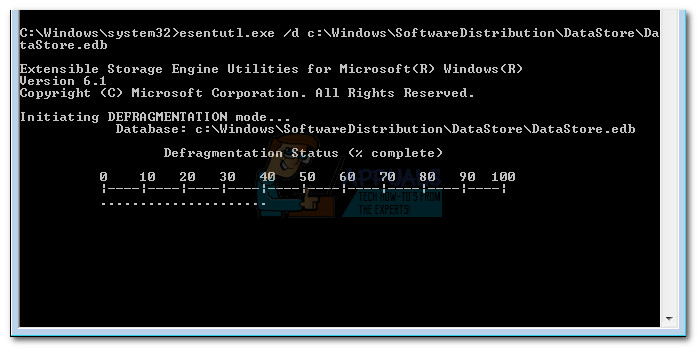
- When the process is complete, reboot your systems and see if the symptoms have improved. If you’re still struggling with the issue, move to the method below.
Method 3: Using Windows Repair (All-in-One)
If the official fixes didn’t work or weren’t applicable, there’s another popular fix that will resolve the issue if it’s related to system file corruption.
Windows Repair (All-in-One) is a free utility that contains a collection of fixes for all Windows versions. This software will allow us to fix any WU problem that might be causing the problem. Here’s a quick guide to using Windows Repair to fix this particular issue:
- Download the portable version of Windows Repair from this link (here).
- Extract all the files present in the Windows Repair archive.
- Double-click on the Repair_Windows executable to open the utility.
- Wait until the initial check is complete, then click on the Repairs – Main tab. Then, check the box next to Automatically Do A Registry Backup and click on Open Repairs.
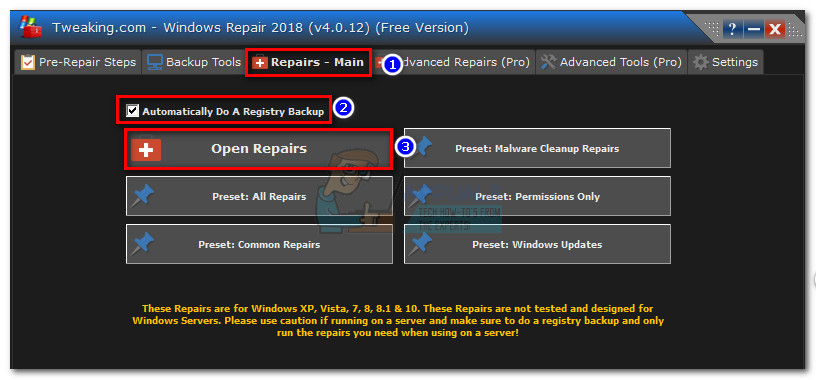
- After a few brief moments, you’ll see a list of all your available repair strategies. Since we only need a few of them for our purpose, unselect all repair strategies. Then, re-enable only the following ones:
Reset Service Permissions
Repair WMI
Register System Files
Remove Policies Set By Infection
Repair Windows Updates
Repair MSI (Windows Installer) - Make sure that the Restart box is enabled, then click on Start Repairs and wait for the process to complete.

- Once the process has finished, hit Yes to confirm the reboot and see if the problem is fixed after the restart. If it isn’t, move to the next method.
Method 4: Reinitiating the SoftwareDistribution folder
If the first two fixes have been unuseful, let’s see if cleaning the SoftwareDistribution folder will eliminate the issue. Although there are mixed views about the effectiveness of this method, some users have reported that high disk usage problems have stopped once the SoftwareDistribution folder has been recreated.
Cleaning the SoftwareDistribution folder will force Windows to reinitiate all of its components, including DataStore.edb. This will resolve any issue related to corruption that might cause excessive memory hogging by DataStore.edb.
Note: The SoftwareDistribution folder is where automatic updates and related files are being stored. DataStore.edb is also located here – it’s safe to get rid of, but will force Windows to start from scratch the next time it checks for updates. So if you complete the procedure below, expect WU to take a lot of time the next time it needs to install an automatic update because it will need to check everything.
Here’s a quick guide to cleaning the SoftwareDistribution folder via Command Prompt:
- Click the Start bar in the bottom left corner and search for “cmd“. Then, right-click on Command Prompt and select Run as administrator.

- Type the following commands into the elevated Command Prompt and hit Enter after each one:
net stop wuauserv
net stop bits
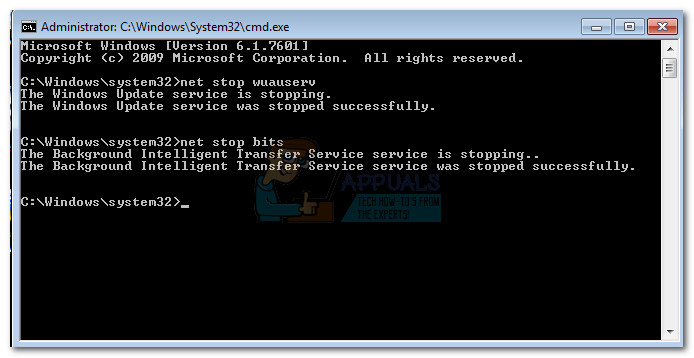 Note: This will disable the update components that make use of the SoftwareDistribution folder. Skipping this step will not allow you to delete the folder if it’s currently in use.
Note: This will disable the update components that make use of the SoftwareDistribution folder. Skipping this step will not allow you to delete the folder if it’s currently in use. - Once the services are disabled, paste the following command into Command Prompt and hit Enter:
ren C:\Windows\SoftwareDistribution SoftwareDistribution.old
Note: This command renamed the SoftwareDistribution folder.The .old extension will force Windows to recreate a new SoftwareDistribution folder. - Restart the services we’ve previously disabled by typing the following commands and hitting Enter after each one:
net start wuauserv
net start bits
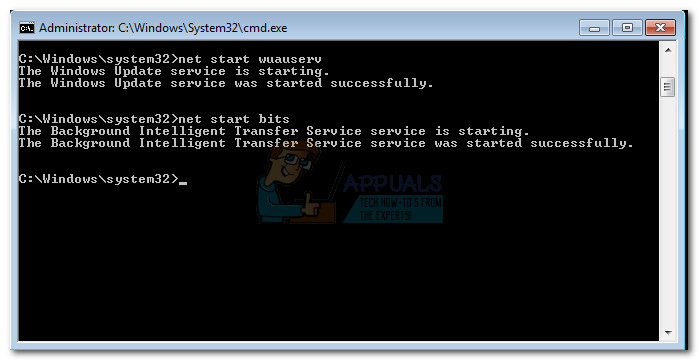
- Reboot your computer, navigate to C:/Windows and delete the SoftwareDistribution.old folder.
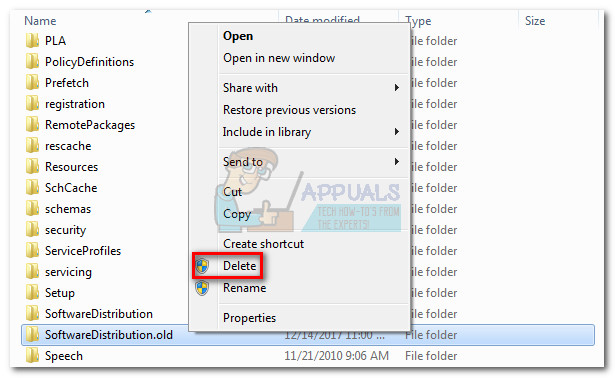
If you’re still experiencing high disk usage, move to the method below.
Method 5: Exclude datastore.edb from antivirus check
As it turns out, this issue can also be caused by an overzealous anti-virus program. Home users experiencing slow startups managed to resolve this issue by including the datastore.edb file on the exclusion list of Microsoft Security Essentials / Windows Defender.
Note: While the steps below might make your PC more responsive, adding anti-virus exclusions is not something you want to do frequently. Adding unnecessary AV exclusions might increase the chance of malicious attacks.
Here’s a quick guide to excluding datastore.edb and other files used by it from your Antivirus:
Note: The following steps are done with Windows Defender / Microsoft Security Essentials. However, every security suite should have an exclusion list, regardless of the antivirus package that you’re using.
- Use the start icon to search for Windows Defender or Security Essentials and open the security suite.
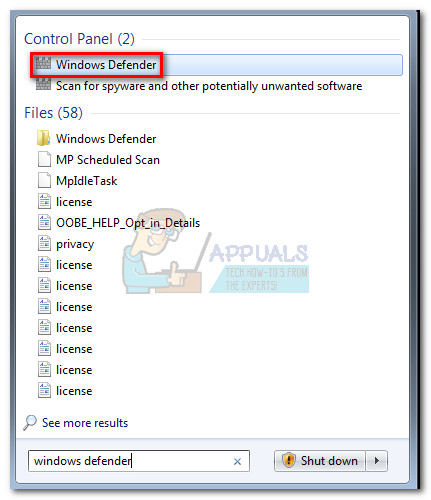
- In Windows Defender / Security Essentials, go to Tools and click on Options (Settings on Security Essentials).
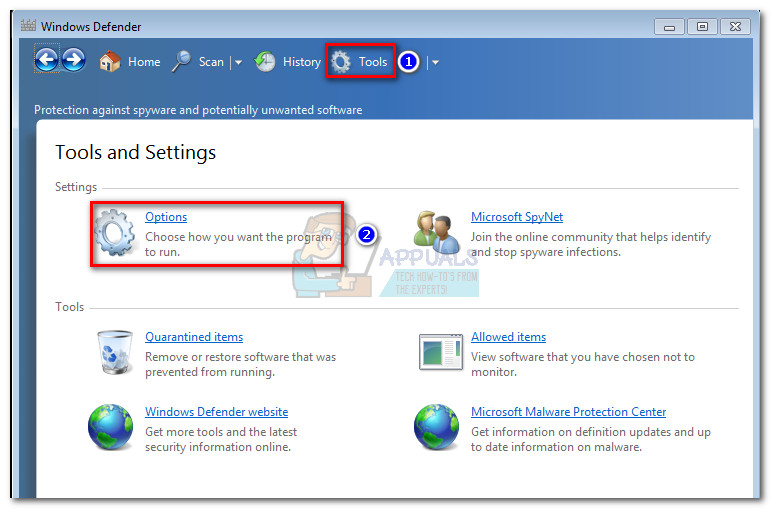
- Select Excluded files and folders (Excluded files and locations), then click the Add button. Navigate to C:\ windows\ SoftwareDistribution\ Datastore and double-click on datastore.edb.
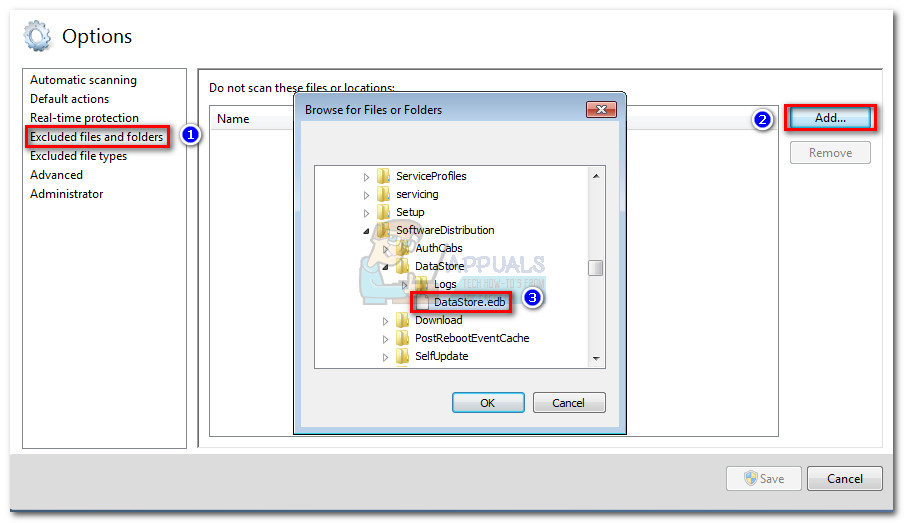
Note: This will prevent the Antivirus from scanning the datastore.edb file. - Repeat step 3 with the following path also:
c:\windows\softwaredistribution\datastore\logs\
Note: These are the log files of Windows Update and Automatic Update. Information from here is also collected in datastore.edb. - Hit Save/ Save changes and see if your PC’s speed is improved after a reboot.

Method 6: Disabling WU (Windows Updates)
If you’ve come this far without a palpable result, there’s one last fix that seems to have worked for most users that encountered this issue. Unfortunately, it’s far from ideal. Disabling the WU (Windows Updates) service will eliminate the need for your system to ever read or write on the datastore.edb file, thus resolving any memory hogging conflict caused by this particular file.
However, the implications are huge as you’ll cut yourself from automatically receiving security updates and other stability fixes. Ideally, you should remember to regularly enable the WU service after performing this method so that you keep your system updated.
If trading a potential malware infection for increased system responsiveness seems like an acceptable deal, follow the steps below to disable Windows Updates:
- Press Windows Key + R to open a Run window. Type “services.msc” and hit Enter to open the Services window.

- In the Services windows, scroll down to Windows Update, right-click on it and select Properties.
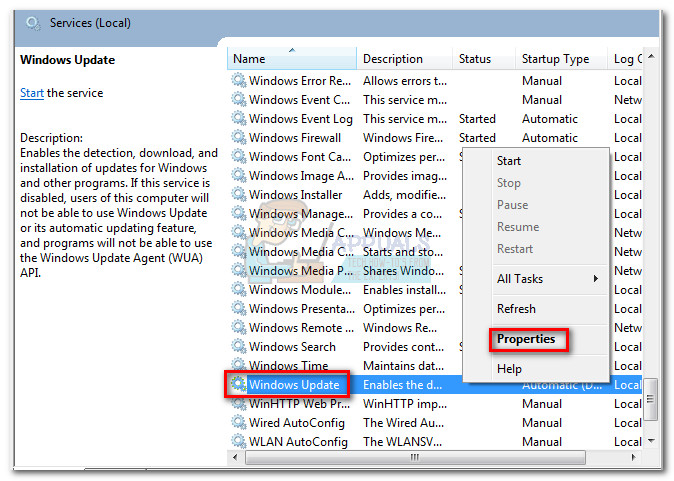
- Under Properties in the General tab, use the drop-down menu next to Startup type to select Disabled. Then click Apply to save your changes and close the Services window.

- Reboot your system and see whether the resource usage has decreased.
Note: Remember to regularly return to the Services screen and re-enable the Windows Update service to ensure that you have the latest security updates. Keep the service enabled until all the updates are applied, use the steps above to disable WU again.